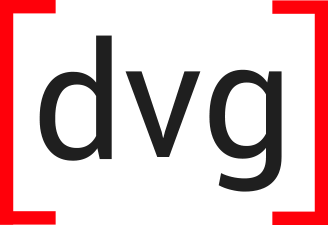Well, the new year is upon us once again and we at DVG are confident UX Design is only going to become an even greater commodity in 2017. More and more business-minded people are realizing the importance of great user experience design. Well-thought-out UX can greatly improve your product, system or service and immensely accelerate your business growth. Here are few of the trends and buzzwords we feel will make traction in 2017.
1. Age-Responsive Design:
You’ve probably heard of responsive design; well, we hope you have because ever since April 2016, Google’s new algorithm will significantly impact your site’s rankings if it is not responsive (mobile-friendly), but that’s a subject for another blog post. Responsive design is a website or application that responds to different widths and adapts the design to specific platforms such as desktop, tablet and mobile. Age-responsive design takes creating custom experiences to the next level by delivering age-appropriate, targeted design to the user of that device. Depending on the needs this could be as simple as larger font sizes for older viewers or possibly utilizing completely unique layouts to better address the needs of various age groups. Maybe great grandpa doesn’t need to learn what a hamburger menu icon is at this point.
2. Skeleton Screens:
This is a trend that has been around for a minute but it will gain even more momentum in 2017 because it’s a simple, yet smart and practical solution. We all know users hate waiting for content and bounce rates can skyrocket when humans don’t get the instant visual gratification they crave. By using low-resolution simple interface mock-ups as a visual cue and loading one element after the other into each UI container, the Facebook app, for example, takes advantage of this technique quite successfully. So seamlessly that it is almost subconscious to the user, but it works fantastically. The user is visually satisfied knowing content is loading and, more importantly, less likely to bounce off your app or site and onto the competitor’s.
3. De-Linearity:
We’ve all heard the phrase “less is more,” and it is said no more frequently than in the world of UX design, where simplicity is considered a holy virtue. Some great applications today take users through a very linear process, from step one to step two, and so on. Although this method does work and has its pluses, a trend toward more user controlled UX is on the rise and more designers will be questioning if less is always more. Should we give our users more control over their experience and let them explore on their own? By giving them more than one way to do something and more custom power at their fingertips, could we actually improve a user’s experience? Humans definitely like easy, but they also aren’t linear creatures and they do like control. De-linearity will be hotly debated and interesting topic among UX designers and their clients in the coming year for sure.
4. Clickable Prototypes:
A clickable prototype is usually a simple interactive wireframe or design that allows users to navigate from page to page and use functionality, such as drop down menus, to get a better understanding of how the final product will function. Prototyping has been around for quite a few years, but we at DVG we feel will only grow in 2017. UX and UI designers have always had the challenge of presenting their idea to a client and having them understand those concepts clearly. We also don’t always know how humans will interact with a new product, system or service. By building clickable prototypes, one can greatly improve the client’s comprehension of the user flow and many of the interactive elements. They can also be used to test those interactions with their user base before development, which is crucial in meeting deadlines and budgets.
5. A.I. Support:
We’ve all seen the movies – the machines become self-aware, deem humans a threat and decide they must be destroyed. Thankfully, that won’t happen in 2017, but what will happen is more available and sophisticated artificial intelligence support. Siri, Alexa, Cortana, Google Now, Jibo, M, Clara, Amy and S Voice are all A.I. and although they are not self-aware, they can make your user experiences more pleasant and humanistic. In the future, UX designers will be working with and implementing more A.I. support elements into their products. The A.I. of 2017 will be entertaining and more useful than ever, but no worries, we’re safe from the machine, for now….
6. Optimized Interstitial Anxiety:
Interstitial Anxiety is the momentary state of anxiety a user undergoes when waiting for an action to complete, such as clicking to another page on a website. This anxiety can have a great effect on the usability of your product, system or service. Smart UX designers reduce the user’s stress, dramatically improve the experience and therefore lower bounce rates. Creating transitions, loading lower resolution images as placeholders and/or utilizing skeleton screens are a few ways to anticipate and alleviate this potential problem.
In Conclusion
These are just a few of the UX Design trends and buzzwords for 2017, these six are important to know. We cannot overestimate the importance of having a great user experience for your product, system or service. It can truly make or break its success. 2017 is going to be a terrific year for UX design and we look forward to being a part of making the world’s digital interactions more user-friendly than ever.



